Industry Guide to the Glazed Ceramics and Glassware Regulations
Table of Contents
- Introduction
- Legislation
- Background
- Exposure to Lead and Cadmium from Glazed Ceramic and Glassware Products
- Glazed Ceramics and Glassware Regulations
- Product Testing
- Appendix A: Definitions
- Appendix B: Information Resources
Introduction
This document provides information about the safety requirements that apply under the Glazed Ceramics and Glassware Regulations (GCGR) to glazed ceramic and glassware manufactured, imported, advertised or sold in Canada.
This document is an unofficial summary of safety requirements for glazed ceramic and glassware under the GCGR. It is not intended to substitute for, supersede or limit the requirements under the applicable legislation. In case of any discrepancy between this summary and the legislation, the legislation will prevail.
This document may be updated from time to time. For the most recent version, consult Health Canada's website.
Legislation
Glazed ceramics and glassware and related products manufactured, imported, advertised or sold in Canada are subject to the Canada Consumer Product Safety Act (CCPSA) and the GCGR.
In addition to the product-specific requirements noted in this document, glazed ceramics and glassware are subject to provisions under the CCPSA, which include:
- a prohibition on the manufacture, import, advertisement or sale of any consumer product that is a "danger to human health or safety" as defined in the CCPSA (paragraphs 7(a) and 8(a) of the CCPSA);
- requirements for preparing and maintaining documents relating to suppliers and the location and duration of retail sale of a product (section 13 of the CCPSA); and
- requirements for mandatory incident reporting (section 14 of the CCPSA).
Under the CCPSA, Health Canada has the authority to:
- order tests or studies on a product (paragraph 12(a) of the CCPSA), and
- order recalls and other measures (sections 31 and 32 of the CCPSA).
Enforcement actions taken by Health Canada on a non-compliant consumer product, are authorized by the CCPSA and may include:
- commitment to product correction by industry;
- negotiation with industry for the voluntary removal of the product from the market;
- orders to take specified actions such as a recall;
- product seizure; and
- prosecution.
A Quick Reference Guide for the CCPSA is available on the Government of Canada website. The reader is directed to the legislation for full information on the requirements and prohibitions. See Appendix B - Information Resources of this document for links to references.
Background
Lead glazes have traditionally been used on ceramic and glassware products because they are easy to use, provide a wide choice of colours and finishes and give a smooth, bright look to the glazed product. Cadmium is sometimes used to give a light yellow or orange colour to glazes.
Lead and cadmium are very toxic and can cause serious health problems when ingested, especially to children. Lead affects the nervous system and can cause mental symptoms like depression, forgetfulness and confusion. Even small amounts of lead can cause learning and behaviour problems in children. Lead also harms the kidneys and blood system. Because lead builds up in the body, ongoing exposure to small amounts of lead can result in large amounts of lead being stored in the body. At high doses, lead causes seizures, coma and death.
Exposure to low amounts of cadmium can cause kidney damage and weak bones. At higher amounts, cadmium causes vomiting, nausea, stomach pains, diarrhea, dizziness and muscle cramps. Exposure to high levels of cadmium over a short period will cause shock, collapse and sometimes death.
Exposure to Lead and Cadmium from Glazed Ceramic and Glassware Products
If lead or cadmium is used in the glaze or other decorative elements of ceramic or glass products that are used to prepare, serve or store food (including drinks), it can migrate out and enter the food. Anyone who eats or drinks the food will be taking lead or cadmium into their bodies. Lead and cadmium dissolve more easily from worn, cracked or chipped surfaces. They also dissolve more easily into hot foods and into foods with a high acid content, like fruit juices and alcoholic beverages. The longer the food remains in contact with a product containing lead or cadmium, the more lead or cadmium may move into the food.
Glazed Ceramics and Glassware Regulations (GCGR)
These Regulations help protect Canadians by setting limits on the amount of migratable lead and cadmium in all glazed or otherwise decorated ceramic or glass foodware products. The Regulations apply to products that are manufactured, imported, advertised or sold in Canada that:
- are completely or partly made of ceramic or glass;
- are completely or partly covered with a coating, glaze or decoration that contains lead or cadmium; and
- are used to store, prepare or serve food, including drinks.
Decorations include but are not limited to painting, heat-pressed designs, direct screens, and various decals.
Almost all ceramic foodware products sold in Canada are glazed. The GCGR do not cover undecorated glass foodware products. However, glass drinking vessels that have a distinctive exterior decoration, coating or glazing within 20 mm of the lip or rim must not release lead in excess of 4 mg/L or cadmium in excess of 0.4 mg/L when tested according to the method set out in Section 2 of the Schedule to the regulations.
Examples of products in scope of the GCGR are presented in Figures 1 to 10.
Fig. 1: Drinking glass with decorative glazing
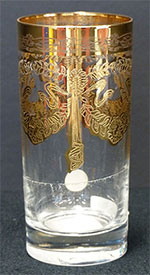
Fig. 2: Glazed ceramic tagine
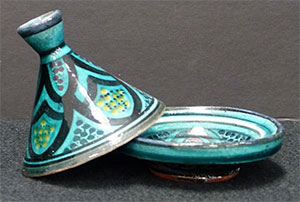
Fig. 3: Glazed ceramic spoon

Fig. 4: Ceramic pitcher
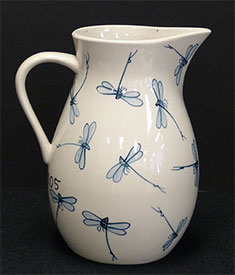
Fig. 5: Ceramic cup and saucer with decorative glazing
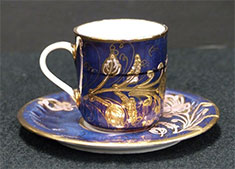
Fig. 6: Glazed ceramic table plate
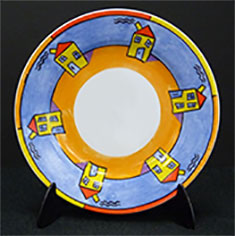
Fig. 7: Glazed serving bowl
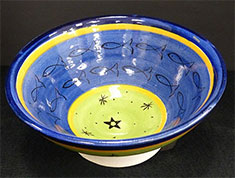
Fig. 8: Small glazed dish
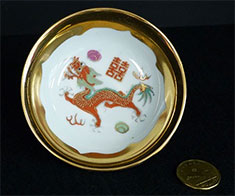
Fig. 9: Drinking glass with decoration near rim
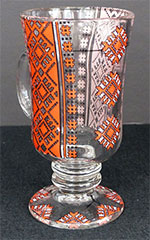
Fig. 10: Drinking mug with decorative glazing near rim
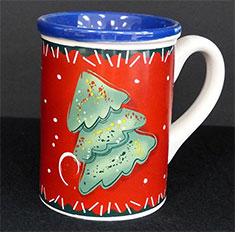
The amounts of lead or cadmium that could be released from a glazed ceramic or glass foodware product are affected by the size and shape of the product. For this reason, the maximum limits for migratable lead and cadmium under the GCGR are different for different sizes and shapes of products. The table below summarizes the limits for migratable lead and cadmium in glazed ceramic and glass foodware.
| Type of Product | Migratable Lead Limit (milligrams per litre) | Migratable Cadmium Limit (milligrams per litre) |
|---|---|---|
| Flatware | 3.0 | 0.50 |
| Small hollowware, other than cups or mugs | 2.0 | 0.50 |
| Large hollowware, other than pitchers | 1.0 | 0.25 |
| Cups or mugs | 0.5 | 0.50 |
| Pitchers | 0.5 | 0.25 |
| See Appendix A for definitions of the foodware types mentioned in the above table. | ||
Ornamental Glazed Ceramic and Glassware Products
The GCGR provide an exception for products that are intended for ornamental use only. Such products are not required to meet the migratable lead and cadmium limits of the GCGR, but they must have a design feature or permanent warning indicating that the product is not suitable for storing, preparing or serving food.
Design Features or Permanent Warnings
The design feature is one that renders the product unsuitable for storing, preparing or serving food. Such features should be permanent and can include:
- a hole placed so that food cannot be contained in the product, or
- a mounting hook or holder that remains attached to the product for its lifetime under normal conditions of use and cleaning.
Glued-on hooks, removable plate holders and similar features that are not a permanent part of the product are not considered to meet the exception criteria for paragraph 4(a) of the GCGR.
Alternatively, a permanent warning must be displayed in both official languages and in capital letters that are 3 mm or more in height. The warning must be one of the following texts or a similar text, as may be appropriate:
DANGER!
CONTAINS LEAD - CONTIENT DU PLOMB
DO NOT USE FOR FOOD - NE PAS UTILISER POUR LES ALIMENTS
DANGER!
CONTAINS CADMIUM - CONTIENT DU CADMIUM
DO NOT USE FOR FOOD - NE PAS UTILISER POUR LES ALIMENTS
DANGER!
CONTAINS LEAD AND CADMIUM - CONTIENT DU PLOMB ET DU CADMIUM
DO NOT USE FOR FOOD - NE PAS UTILISER POUR LES ALIMENTS
Fig. 11: Example of warning label
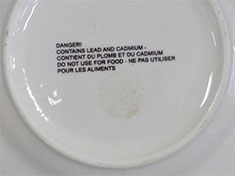
A permanent warning is one that remains legible for the lifetime of the product under normal conditions of use and cleaning. A permanent warning may be one that is engraved, stamped or printed directly on the product.
Product Testing
It is the responsibility of industry members to ensure compliance of a product with Canadian safety legislation. Testing a product against the requirements of the GCGR is a means of verifying compliance with these requirements. While not mandated, such testing should be performed by industry members or a laboratory prior to marketing a product in Canada. When using the services of a private testing laboratory, industry members should verify that the laboratory: has a quality system in place, is familiar with Canadian safety requirements and test methods and can test to these requirements.
Appendix A: Definitions
Definitions from Section 1 of the GCGR
- cup or mug:
- means any small hollowware that is used for the consumption of liquids
- drinking vessel:
- any hollowware from which one can drink liquids
- flatware:
- means a product that has an internal depth not exceeding 25 mm, measured vertically from the lowest interior point to a horizontal plane passing through the point of overflow
- hollowware:
- means a product that has an internal depth greater than 25 mm, measured vertically from the lowest interior point to a horizontal plane passing through the point of overflow
- large hollowware:
- means any hollowware that has a capacity of 1.1 L or more.
Note that large hollowware that meets the definition of pitcher, has distinct requirements compared to other large hollowware. - permanent warning:
- means a warning that remains legible for the lifetime of the product under normal conditions of use and cleaning
- pitcher:
- means any large hollowware that is commonly used for storing and dispensing liquids but does not include a creamer, coffeepot, or teapot
- small hollowware:
- means any hollowware that has a capacity of less than 1.1 L
Other Terms
- ceramic product:
- product made of clay and permanently hardened by heat, including pottery, earthenware, terracotta, stoneware, porcelain, various types of fine china
- food (Section 2 of the Food and Drugs Act):
- includes any article manufactured, sold or represented for use as food or drink for human beings, chewing gum, and any ingredient that may be mixed with food for any purpose whatever
- foodware
- any product that is used or may be used in preparing, cooking, serving or storing food, including drinks
- glass:
- a hard, easily broken material made by heating silica sand or sometimes another material, to very high temperatures
- glaze:
- a coating on a ceramic or glass product
- migratable lead, migratable cadmium:
- amount of lead or cadmium that can be dissolved out of a foodware product into a food contained in the product when tested in accordance with the methods set out in the schedule to the GCGR
Appendix B: Information Resources
NOTICE: For further information visit the resources below or contact a Health Canada Consumer Product Safety Office via email (cps-spc@hc-sc.gc.ca) or telephone at 1-866-662-0666 (toll-free within Canada and the United States).
- Canada Consumer Product Safety Act
- Glazed Ceramics and Glassware Regulations
- Canada Consumer Product Safety Act Quick Reference Guide
- Guidance on Mandatory Incident Reporting under the Canada Consumer Product Safety Act - Section 14 Duties in the Event of an Incident
- To subscribe for email updates about the Canada Consumer Product Safety Act